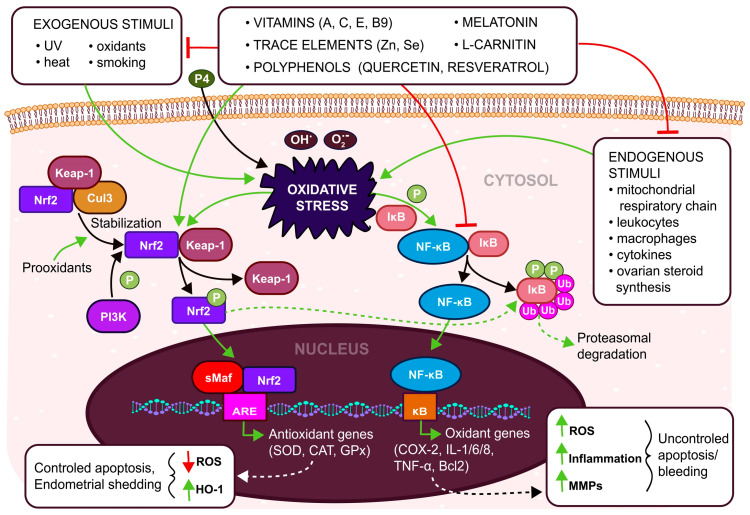Figure 1.
Oxidative stress (OS) is a stimulant (green arrows) of two main antioxidant signaling pathways-Nrf2 and NF-κB. Nrf2 signaling is involved in the expression of antioxidant enzymes, minimizing the effect of OS. NF-κB signaling is involved in the expression of genes for cells surviving under OS. Exogenic antioxidants (vitamins, trace elements, polyphenols, etc.) activate Nrf2 signaling and inhibit (red lines) the NF-κB pathway and eliminate exogenous as well as endogenous stimuli of OS. (Nrf2—Nuclear factor erythroid 2-related factor 2, Keap-1—Kelch-like ECH-associated Protein 1, Cul3—cullin protein 3, PI3K—Phosphoinositide 3-kinase, P—phosphate, NF-κB—Nuclear factor kappa-light-chain-enhancer of activated B cells, IκB—inhibitor of nuclear factor kappa B, sMaf—musculoaponeurotic fibrosarcoma, ARE—Antioxidant responsive element, κB—κB DNA binding, SOD—Superoxide dismutase, CAT—Catalase, GPx—Glutathione peroxidase, COX-2—Cyclooxygenase 2, IL-1/6/8—Interleutkin 1/6/8, TNF-α—Tumor necrosis factor α, Bcl2—B-cell lymphoma-2, ROS—reactive Oxygen Species, HO-1—Heme Oxygenase 1, MMPs—Matrix metalloproteinases, Ub—ubiquitin).

